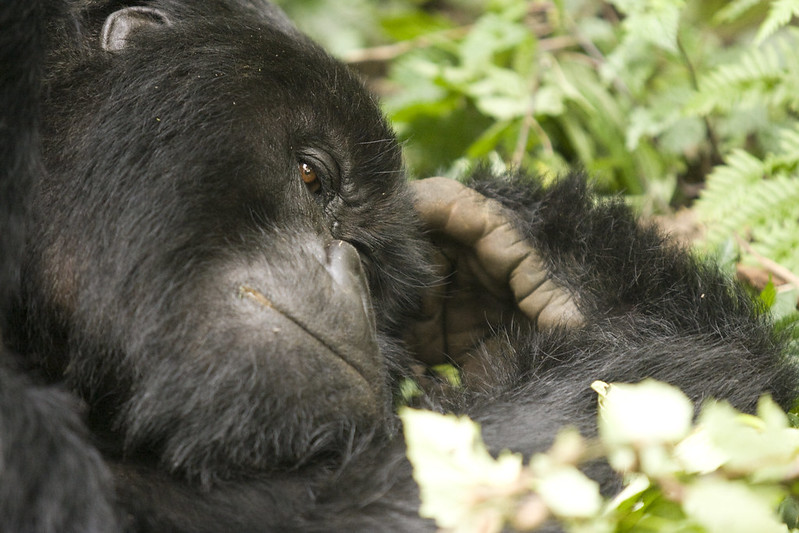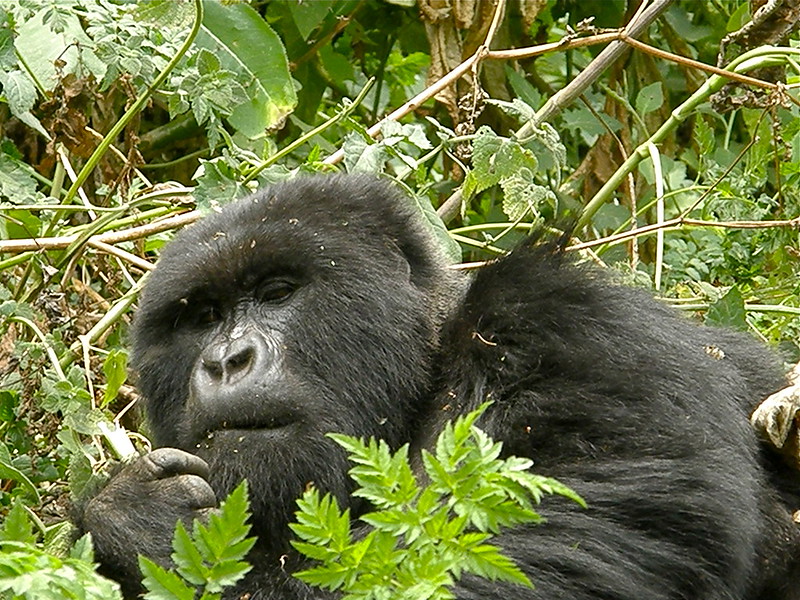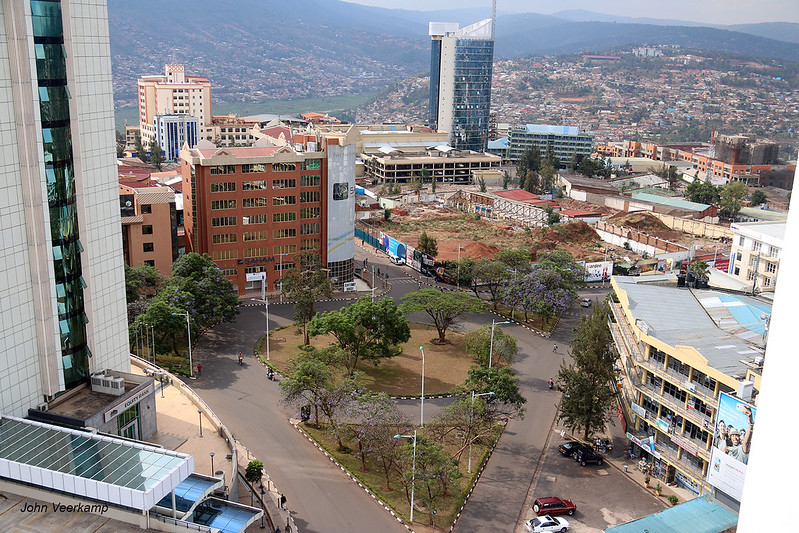Gorilla talk: Exclusive primate trekking and tours
A gorilla talk is a get-through or presentation that entails gorillas in specific conservation areas like the zoo, gazetted national park, sanctuary, or any wildlife documentary or education environment. Gorilla talks involve game rangers, game guides, zookeepers, and other conservation specialists and instructors discussing the behaviour, ways of life, and communication means used by gorillas to gorillas and gorillas to humans.
Gorillas are magnificent apes thriving in Africa’s dense rainforests. Gorillas are primates with high intelligence sharing 98.3% of DNA with humans. Gorillas are mainly of two types in the world that are eastern and western gorillas. The two types live in a close range that is separated by less than 600 miles in their habitats. The Eastern gorillas comprise the mountain gorillas (beringei beringei) and the eastern lowland gorillas ( beringei graueri). Western gorillas include western lowland gorillas (gorilla gorillas) and the cross-river gorillas (gorilla diehli).
Exclusive gorilla talk briefing
This is a unique talk around gorillas in which a small group of people privately organize to engage with park guides or rangers to have a deeper explanation about the gorillas. At times the talks are part of a safari package or private education experience. Talks are usually carried out in the accommodation to visitors who expect to go tracking the following day to get into the depths of the whole tracking process.
The talk at times aims at providing detailed information about the behaviour of gorillas and the conservation methods applied in particular parks to sustain the gorillas. In the session of the talks, participants directly interact with the primatologist and game rangers who provide all the basic information that might be left out at the briefing time as participants are going to start tracking since less time is allocated for briefing about the gorillas.

Importance of gorilla talk

Gorilla talks help to educate and create awareness to trekkers and researchers about the life status and social behaviour of gorillas which helps them to appreciate the importance of conservation and the existence of gorillas in the wilderness. Gorilla talks act as a detailed briefing about the gorilla tracking experience which helps the participants to know the behaviour of the gorillas and learn how to interact with them without provoking them. This provides safety to both the gorillas and the trekkers.
Through gorilla talks, rangers always lay stress on the significance of conservation as they discuss the efforts and challenges like poaching and habitat loss that are encountered when carrying out their activities. This enables the tourists to contribute positively to the conservation cause. The gorilla talks help to give trekkers a deep understanding of the gorillas through the safety guidelines and awareness of what to carry for the activity to have a fruitful experience.
Gorilla families
Groups of gorillas are called troops. Each troop is led by a dominant silverback that is identified by silver hair on its back. A gorilla family is made up of the dominant silverback as the overall head of the family, adult females that mate with the silverback and care for the young ones, the juveniles (young ones between 3-8 years) , the infants that are born after eight and a half months and are always seen being carried on their mother’s backs and the blackbucks (teenage males) that have not yet developed the silver fur. Gorillas are found in different African countries. Mountain gorillas are mainly found in Uganda, Rwanda, and the democratic republic of Congo. Ugandan gorillas reside in Bwindi’s impenetrable national park with 22 confirmed gorilla families, and Mgahinga National Park with one gorilla family. Rwanda’s Volcanoes National park has 12 gorilla families, while Virunga National Park and Kahuzi Biega National Park have 13 confirmed gorilla families. The number of gorilla families in countries with western lowland gorillas and cross-river gorillas is not yet fully established due to the challenging terrain in the forested zones and conflicts in their region.

Gorilla Family Formation
Gorilla family formation is a process that involves interaction between males and females and their offsprings. Gorillas form families in different ways due to biological, social, environmental, and natural factors which include the following:
When the teenage males (blackbacks) reach the age of 8 to 12, they leave the mother group to avoid conflict with the dominant silverback because of mating purposes. The splinter group can later form another family.
A young male silverback moving alone tries to attract females from other families. The silverback feels strong when the females join the group and take full family leadership. Over time, when the silverback establishes dominance of the family, it starts mating with the females who later give offsprings which later creates a larger family. Sometimes some members leave a large family and move on to form another family in another area, creating a new family. In most cases, it’s always after strong conflicts between the dominant Silverback and the Blackbacks. At times some family members move longer distances in the forests looking for food but end up in distant areas where they can’t get into close contact with the main group and end up forming a new family. When the dominant silverback dies, the blackbacks start fighting amongst themselves as to who should become the leader of the family. The defeated silverback may decide to leave the group and attract some females to join him to start a new family.
Check out our recommended gorilla trekking packages

1 Day Budget Rwanda Gorilla Trek takes you Budget Gorilla Trekking in Rwanda at (US $1800 per person) 2023.

2 Days Rwanda Gorilla Trekking Safari starts at Volcanoes National Park in Rwanda. (Affordable) 2 Days Rwanda

3 Days Budget Rwanda Gorilla Trekking Tour takes you Budget Gorilla Trekking Tour in Rwanda 2023 at Volcanoes

5 Days Budget Rwanda Gorillas & Dain Fossey Hike takes you Gorillas Trek s tours & Dian Fossey Hike 2024.

6 Days Chimpanzee and Gorilla Tour offers you Chimpanzee Tracking Tours in Nyungwe and Gorilla Trekking

7 Days Rwanda Gorilla Tour & Wildlife Safari, trek Gorillas & watch wildlife Rwanda at Volcanoes National Park.

8 Days Budget Rwanda Uganda Mountain Gorilla Tour takes you Gorilla Trekking at Volcanoes National Park.

9 Days Gorillas, Wildlife and Chimpanzee Tour takes you on an ultimate safari Adventure in Rwanda.

3 days Budget gorilla trekking in Rwanda starts form Kigali and ends in volcanoes national park, to visit Rwanda

1-day gorilla trekking from Kisoro allows primate enthusiasts to experience mountain gorillas in the Bwindi Impenetrable National Park.

The 1 Day kigali city tour itinerary takes you on an unforgettable journey across Kigali capital city of Rwanda.

9 Days Gorillas, Wildlife and Chimpanzee Tour takes you on an ultimate safari Adventure in Rwanda.
Gorilla tracking rules and regulations are safety guidelines set by different bodies governing, controlling, and conserving the great apes in their natural habitat. For someone to participate in the gorilla tracking activity, he/she should know and respect the following rules and regulations as set by the Uganda Wildlife Authority. For someone to go tracking gorillas, they must be 15 years and above. This is because young children usually carry diseases like the common cold, flu, and other communicable diseases that can easily be transmitted to the gorillas. Therefore, park authorities will ask all trekkers to confirm their identity and ensure one’s eligibility to track gorillas.
Only eight people are allowed to visit a gorilla group per day. This will help to reduce the rate of transmission and minimize disturbances in a particular family.
Rangers have a right to stop anyone being discovered with any communicable disease that can easily be transferred to the gorillas. If you are not feeling well, volunteer and remain behind. If the case is so serious, your money will be refunded, or be given another opportunity when you feel fine.
Listen and follow what the game guides and rangers tell you as you move into the jungle. Avoid talking loudly as noise frightens the gorillas and you may miss chances of spotting some wild creatures like birds and other wild animals.
Always keep the park clean. Avoid littering used materials like water bottles, useless food containers, or tissues in the park. collect all food droppings so that they are not eaten by animals to avoid any intestinal complications. In case you want to ease yourself, the guides will dig for you a hole which you should cover well after use to avoid any disease transmissions.
Do not clear vegetation for clear viewing of the gorillas. If the rangers find it necessary, they know how to do it without scaring the animals.
Avoid eating and smoking in front of the gorillas. At times they may be attracted to come and grab a bite which may cause harm to you.
While tracking, tourists should not surround the gorillas. You should leave reasonable space between one another and ensure 7 meters from the gorillas.
When the gorillas, decide to come closer to you, don’t look so scared, do not run away and if you cannot move slowly backward, just crouch down or remain still.
The fact that gorillas are gentle creatures, tourists should not forget that they are wild animals. So don’t prove familiar to them as they can charge and cause harm. Avoid going to the forest with brightly coloured clothes or shining jewelry. These attract so many teenage gorillas which may result in attacks.
Tourists should strictly use one hour to interact with the gorillas and the rangers will let you know the exact time to start taking photos. Stay calm, avoid movements, and use flashless cameras to avoid any irritation to the gorillas.
Trekkers should avoid putting on sunglasses because their reflection attracts the gorillas to come closer to them to conduct more investigations.
For the best gorilla expeditions, trekkers are advised to wear good hiking shoes because at times the tracking trails are slippery. Always move with packed drinking water and food as at times you may need to spend more hours in search of the great apes. Rain jackets should not be behind because the gorillas reside in tropical rainforests where rain is expected at any time of the day. Long trousers and long-sleeved shirts are necessary to avoid any pinches and bruises from vegetation. Mosquito repellents are needed to avoid any insect bites and stings as forests harbor many dangerous insects.

